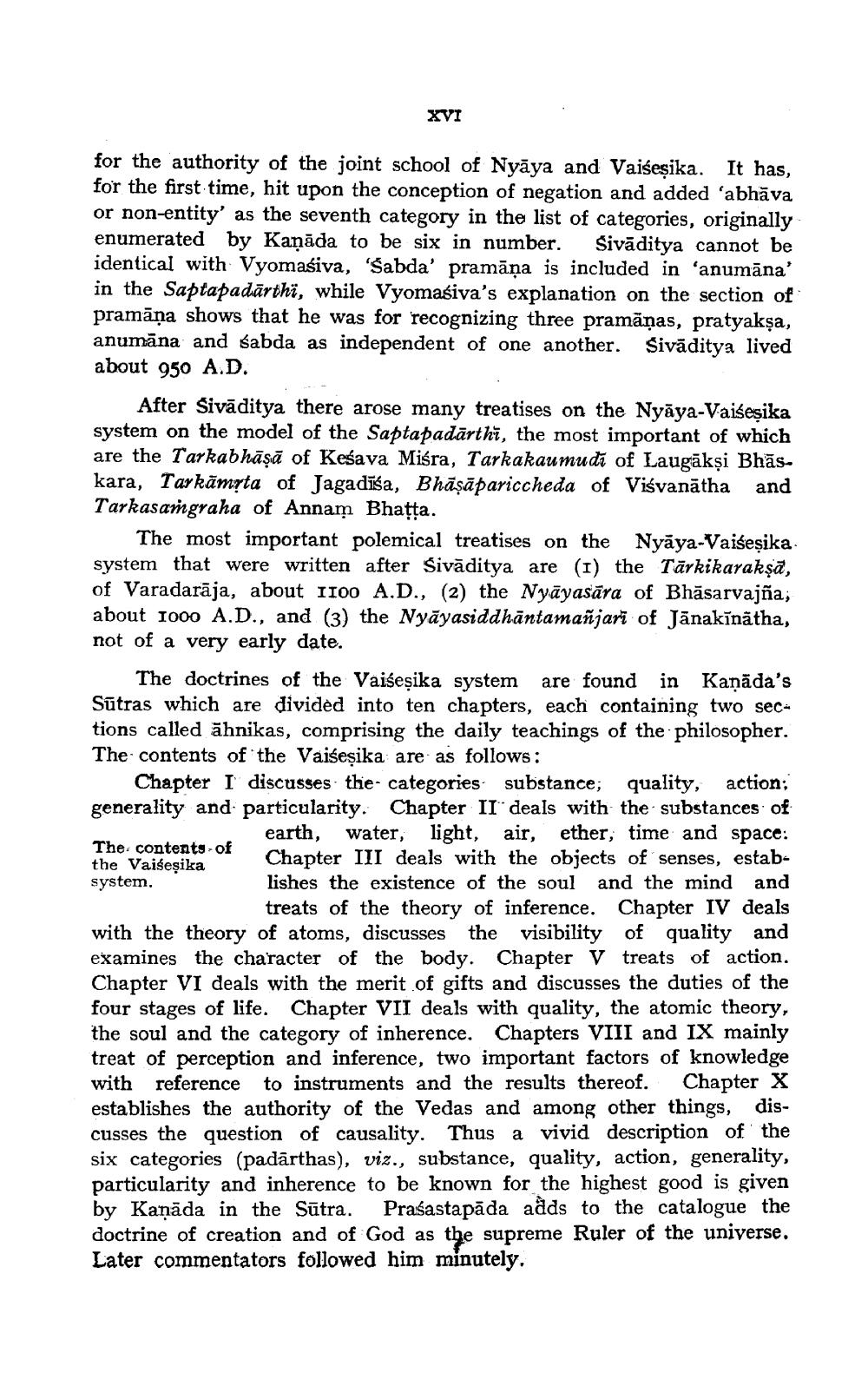________________
XVI
for the authority of the joint school of Nyāya and Vaišeşika. It has, for the first time, hit upon the conception of negation and added 'abhāva or non-entity' as the seventh category in the list of categories, originally enumerated by Kanāda to be six in number. Sivāditya cannot be identical with Vyomaćiva, Sabda' pramāņa is included in 'anumāna' in the Saptapadārthi, while Vyomasiya's explanation on the section of pramāna shows that he was for recognizing three pramäņas, pratyakşa, anumāna and sabda as independent of one another. Sivāditya lived about 950 A.D.
After Sivāditya there arose many treatises on the Nyāya-Vaiseșika system on the model of the Saptapadārthi, the most important of which are the Tarkabhāsā of Keśava Miśra, Tarkakaumudi of Laugākşi Bhās. kara, Tarkāmrta of Jagadīša, Bhāsāpariccheda of Visvanatha and Tarkasargraha of Annam Bhatta.
The most important polemical treatises on the Nyāya-Vaiseşika. system that were written after Sivāditya are (1) the Tärkikarakṣā, of Varadarāja, about 1100 A.D., (2) the Nyāyasāra of Bhāsarvajña; about 1000 A.D., and (3) the Nyāyasiddhāntamañjarī of Jānakīnátha, not of a very early date.
The doctrines of the Vai esika system are found in Kanāda's Sūtras which are divided into ten chapters, each containing two secu tions called āhnikas, comprising the daily teachings of the philosopher. The contents of the Vaiseșika are as follows:
Chapter I discusses the categories substance; quality, action; generality and particularity. Chapter II deals with the substances of
earth, water, light, air, ether, time and space: The contents of the Vaiseşika
Chapter III deals with the objects of senses, estabsystem,
lishes the existence of the soul and the mind and
treats of the theory of inference. Chapter IV deals with the theory of atoms, discusses the visibility of quality and examines the character of the body. Chapter V treats of action. Chapter VI deals with the merit of gifts and discusses the duties of the four stages of life. Chapter VII deals with quality, the atomic theory, the soul and the category of inherence. Chapters VIII and IX mainly treat of perception and inference, two important factors of knowledge with reference to instruments and the results thereof. Chapter X establishes the authority of the Vedas and among other things, discusses the question of causality. Thus a vivid description of the six categories (padārthas), viz., substance, quality, action, generality, particularity and inherence to be known for the highest good is given by Kaņāda in the Sūtra Prasastapāda adds to the catalogue the doctrine of creation and of God as the supreme Ruler of the universe. Later commentators followed him minutely.




